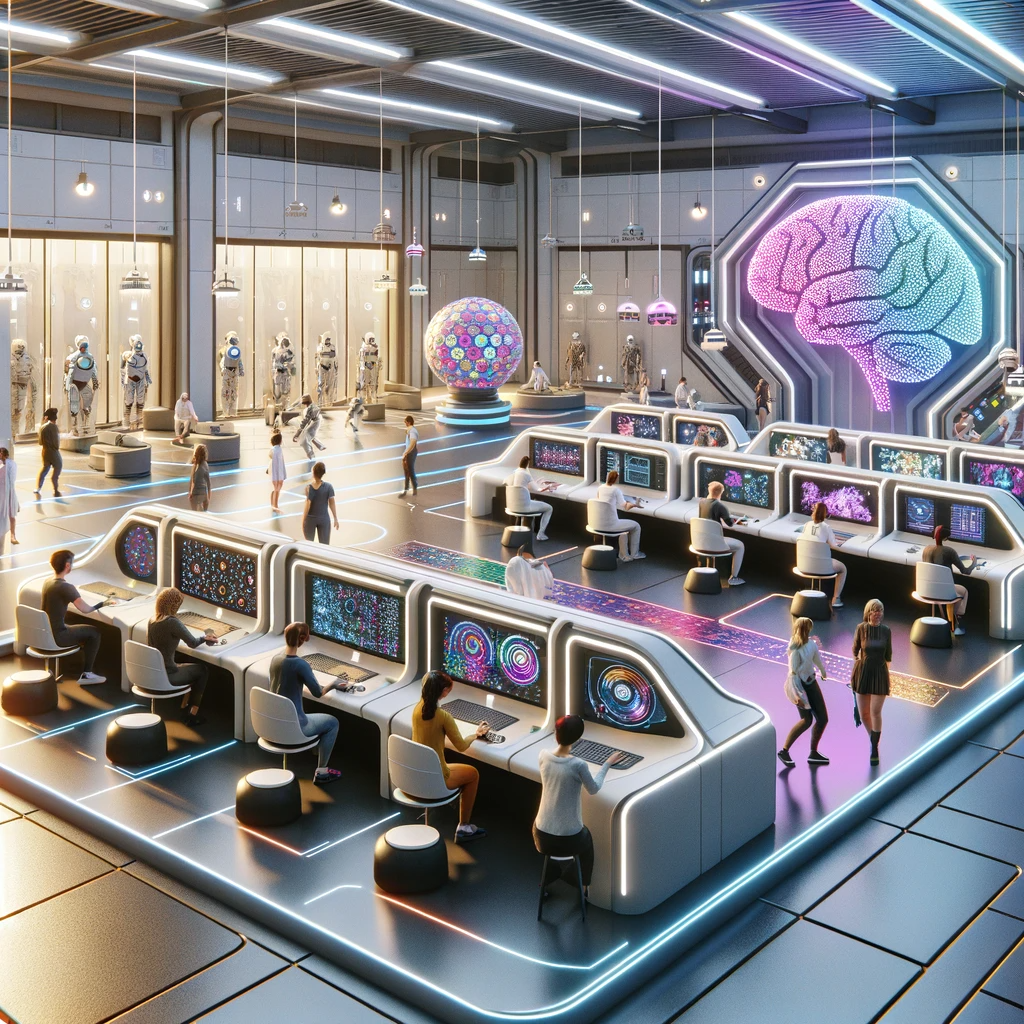
Prompt: Make a picture of a futuristic mind gym where people do a new kind of working out to keep their brains active in a world filled with AI
Listen to Steve to read this post (5 min audio)
An unused muscle will atrophy. It doesn’t matter whether it is a bicept or a brain..
In the age of automation, where AI shoulders an ever-increasing load of our cognitive toil, the concept of a ‘Mind Gym’ might become more than a novelty. Just as the Industrial Revolution led to a weird thing called a gymnasium – where we could work out – because work was no longer physical, the AI Revolution might call for an equivalent space to exercise our most human asset: the brain.
The Need for Neural Dumbbells
We live in a paradox. Our lives have never been more convenient, yet our minds are at risk of following the same path our bodies did, declining in ability as we outsource movement to machines. As AI takes over every mental task imaginable, the risk of cognitive atrophy grows. Enter the ‘Mind Gym,’ or ‘Cerebral Fitness Centers’—sanctuaries dedicated to the rigorous workout of the gray matter.
The Anatomy of a Mind Gym
Imagine walking into a space filled with the buzz of concentrated energy. Here, ‘Neurobics’ are the order of the day. These centers would be equipped with a variety of ‘intellectual treadmills’ and ‘cognitive weights’ designed to enhance mental fitness through tailored exercises that challenge memory, problem-solving, creativity, and emotional intelligence, which will ensure your mind is fit enough to work with the AIs.
The ‘Creativity CrossFit’ area would be a hive of artistic endeavors, from painting to poetry, ensuring that members’ imaginative capacities are given a vigorous workout. Meanwhile, the ‘Focus Zones’ would offer meditation and mindfulness exercises, training attendees in the art of concentration and mental endurance. Of course, ‘Mind Gyms’ would have personal trainers—cognitive coaches, if you will—offering advice on mental nutrition and bespoke brain-training regimens. Group classes would not only provide social stimulation but also encourage collaborative problem-solving, a mental muscle that AI cannot flex.
I can see the neon signs now with names like ‘Brainworks,’ ‘NeuroGym,’ ‘MindCrafters,’ or ‘Synapse Circuit’ to capture the essence of these establishments.
Bonus – Radio interview on 3AW where I discuss the issues of tech dependence during the Optus Outage in Australia effecting 10 million people.
Wait a minute!
Of course, there is an alternate reality. Instead, we simply buy an upgrade ‘off the shelf’ and enhance our brains—the artificial intelligence way. Any skill or ability we want to have inside our mind will be purchasable. Paint like Warhol, write like Tolstoy, become a multi-linguist, or learn to fly a B212 Helicopter—it just depends on how rich you are to purchase the software required. Enter AI wealth discrimination!
It’s worth noting Elon Musk’s brain implant startup, Neuralink, has FDA approval to start surgery!
Or just maybe, just maybe, the ‘Mind Gym’ is more than a response to AI; rather, a statement of our commitment to the human experience. An acknowledgment that while our bodies need exercise to thrive, our minds require an equal measure of challenge and stimulation—even if a mind upgrade could be uploaded directly into our brains.
As always, the future is unwritten; what we need to do is be prepared for plausible trajectories. Both Mind Gyms and nano-chip implants. And always have an open mind (see what I did there?) to what sounds astoundingly ridiculous today.
—
Keep Thinking,
Steve.
PS – If you’re planning a conference for next year – give me a shout by reply email and we’ll discuss how we can wow your team with a keynote on the latest in AI and what’s next!